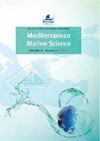利用高精度定位工具和大小分布频率评估barbata (Stackhouse) Kuntze (Fucales, Phaeophyceae)恢复种群的扩张和成功
IF 2.3
3区 环境科学与生态学
Q1 MARINE & FRESHWATER BIOLOGY
引用次数: 4
摘要
近几十年来,持续的人类压力导致了以岩藻目藻类为主的地中海栖息地的复杂性和多样性的丧失和随之而来的贫困。Gonglaria barbata是一种形成栖息地的岩藻目物种,在地中海的几个地方已经消失,它被重新引入了一个海湾(Cala Teulera、MaóBay、Menorca),在那里它已经在当地灭绝了40多年。2011年采用创新的无损检测技术进行了重新引入。在这里,我们描述了重新引入十年后种群的扩张模式,并将恢复后的种群与西班牙已知的唯一自然种群之一(Fornells Bay,Menorca)的规模结构分布进行了比较。新定居的个体表现出从恢复地点逐渐扩散的模式,有利于平行于海岸的最浅水平的岩石基质。G.barbata占据的面积在十年内增加了近三个数量级,从最初恢复面积的约3.6平方米增加到目前恢复面积的2093平方米。新兵和青少年在恢复后的种群中占主导地位,但有些个体已经达到了大型种群,总体规模分布与参考种群相似。我们的研究中包含的高分辨率制图能够准确地对巴巴塔的扩张进行中长期评估。将这些工具纳入恢复后的海洋森林将有助于执行有助于加强养护的有效管理政策本文章由计算机程序翻译,如有差异,请以英文原文为准。
Assessing the expansion and success of a restored population of Gongolaria barbata (Stackhouse) Kuntze (Fucales, Phaeophyceae) using high-precision positioning tools and size distribution frequencies
Ongoing human pressures over recent decades have caused the loss and ensuing impoverishment of the complexity and diversity of Mediterranean habitats dominated by algal species of the order Fucales. Gongolaria barbata, a habitat-forming Fucales species that has disappeared in several places across the Mediterranean, was reintroduced in a cove (Cala Teulera, Maó Bay, Menorca) where it was known to have been locally extinct for more than 40 years. Reintroduction was performed in 2011 using innovative non-destructive techniques. Here we describe the expansion patterns of the population ten years after its reintroduction, and we look at the size-structure distribution of the restored population compared to one of the only natural populations known in Spain (Fornells Bay, Menorca). Newly settled individuals exhibit a progressive dispersal pattern from restoration sites, favouring rocky substrates at the shallowest level parallel to the shore. The area occupied by G. barbata has increased by almost three orders of magnitude in ten years, from approximately 3.6 m2 of the initially restored area to a current restored area of 2093 m2. Recruits and juveniles dominate the restored population but some individuals have reached large size classes, the overall size distribution resembling the reference population. The high-resolution cartography included in our study enables an accurate mid to long-term assessment of the expansion of G. barbata. Incorporating such tools in restored marine forests would facilitate the implementation of efficient management policies that will help reinforce their conservation
求助全文
通过发布文献求助,成功后即可免费获取论文全文。
去求助
来源期刊

Mediterranean Marine Science
MARINE & FRESHWATER BIOLOGY-
CiteScore
5.20
自引率
17.90%
发文量
34
审稿时长
>12 weeks
期刊介绍:
The journal Mediterranean Marine Science (MMS), published by the Hellenic Centre for Marine Research (HCMR), issues three volumes annually. The journal welcomes original research articles, short communications, New Mediterranean Biodiversity records, extended reviews, comments, and Theme sections in all fields of Oceanography, Marine Biology, Marine Conservation, Fisheries and Aquaculture in the Mediterranean area and the adjacent regions. All content is peer reviewed.
 求助内容:
求助内容: 应助结果提醒方式:
应助结果提醒方式:


